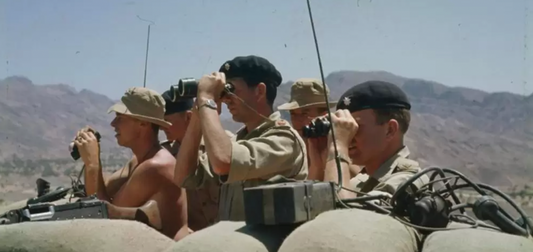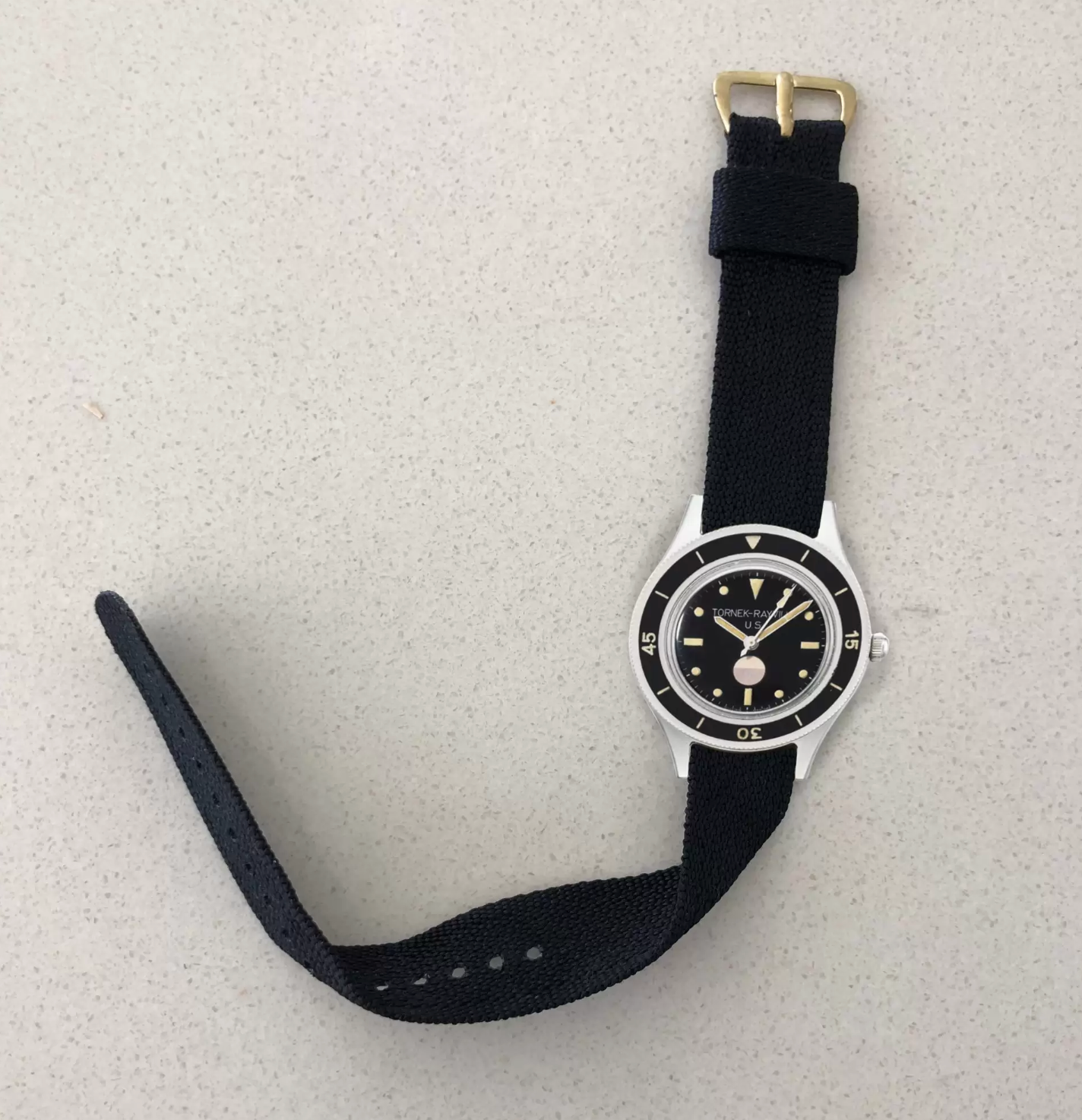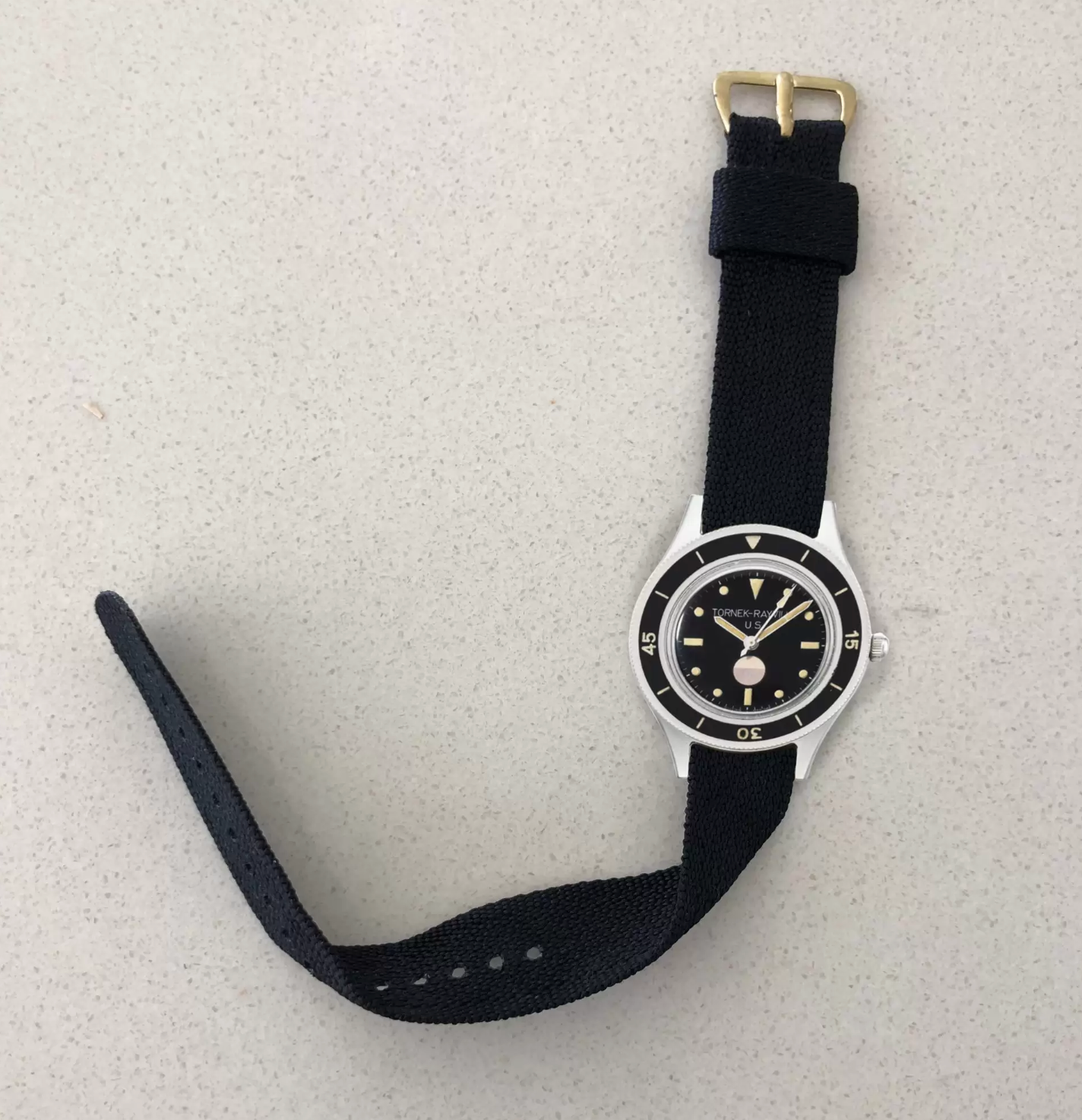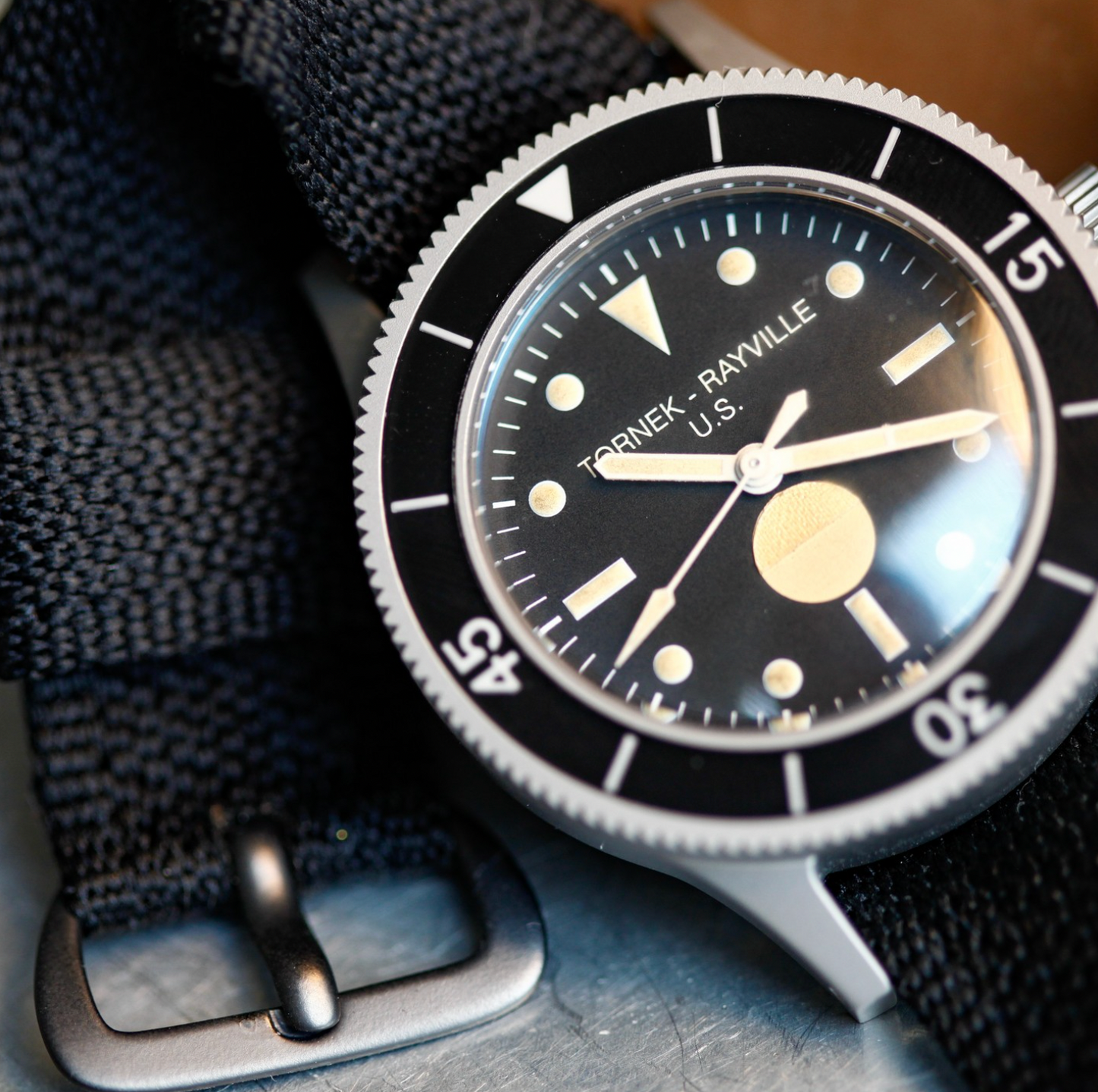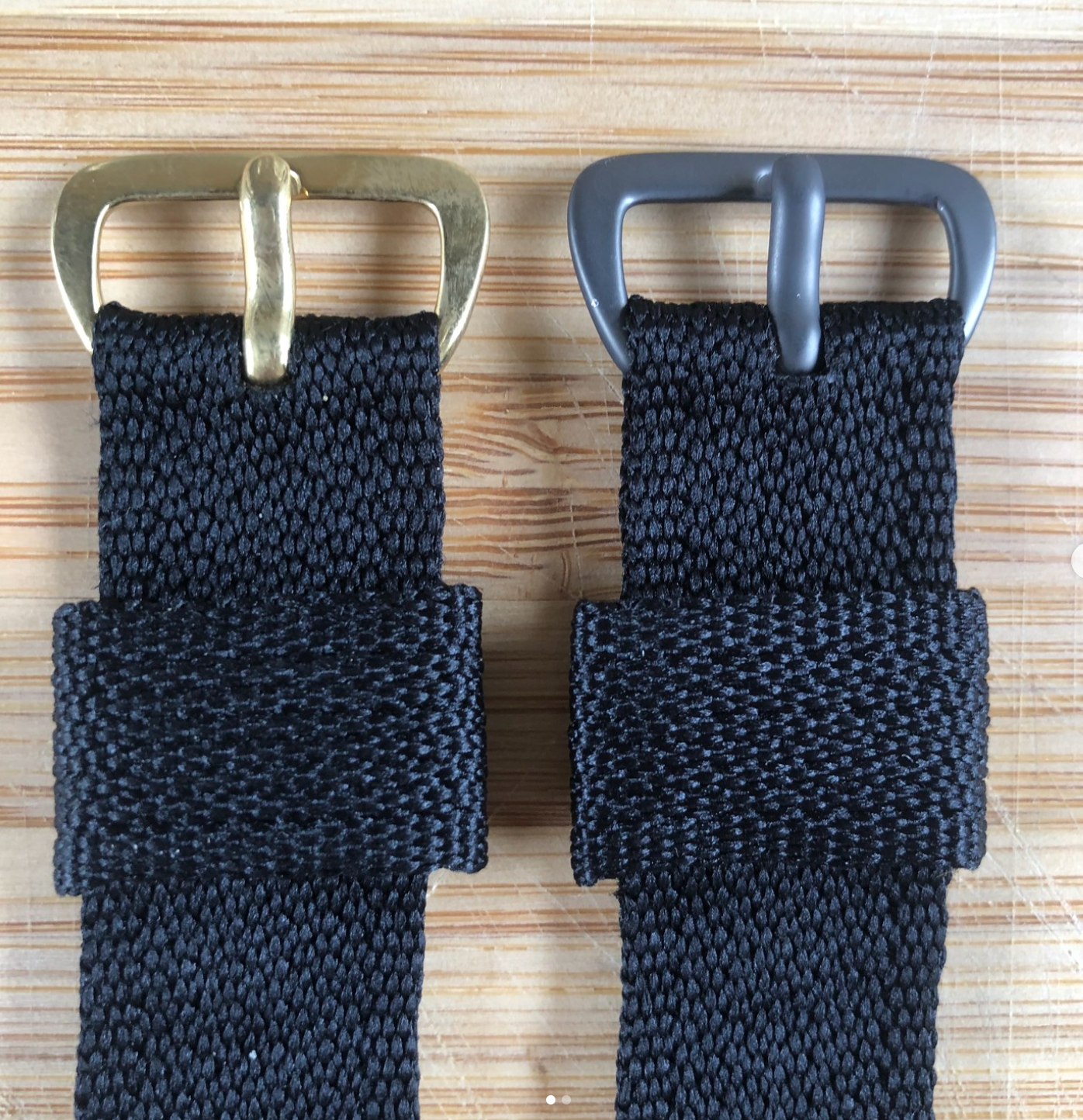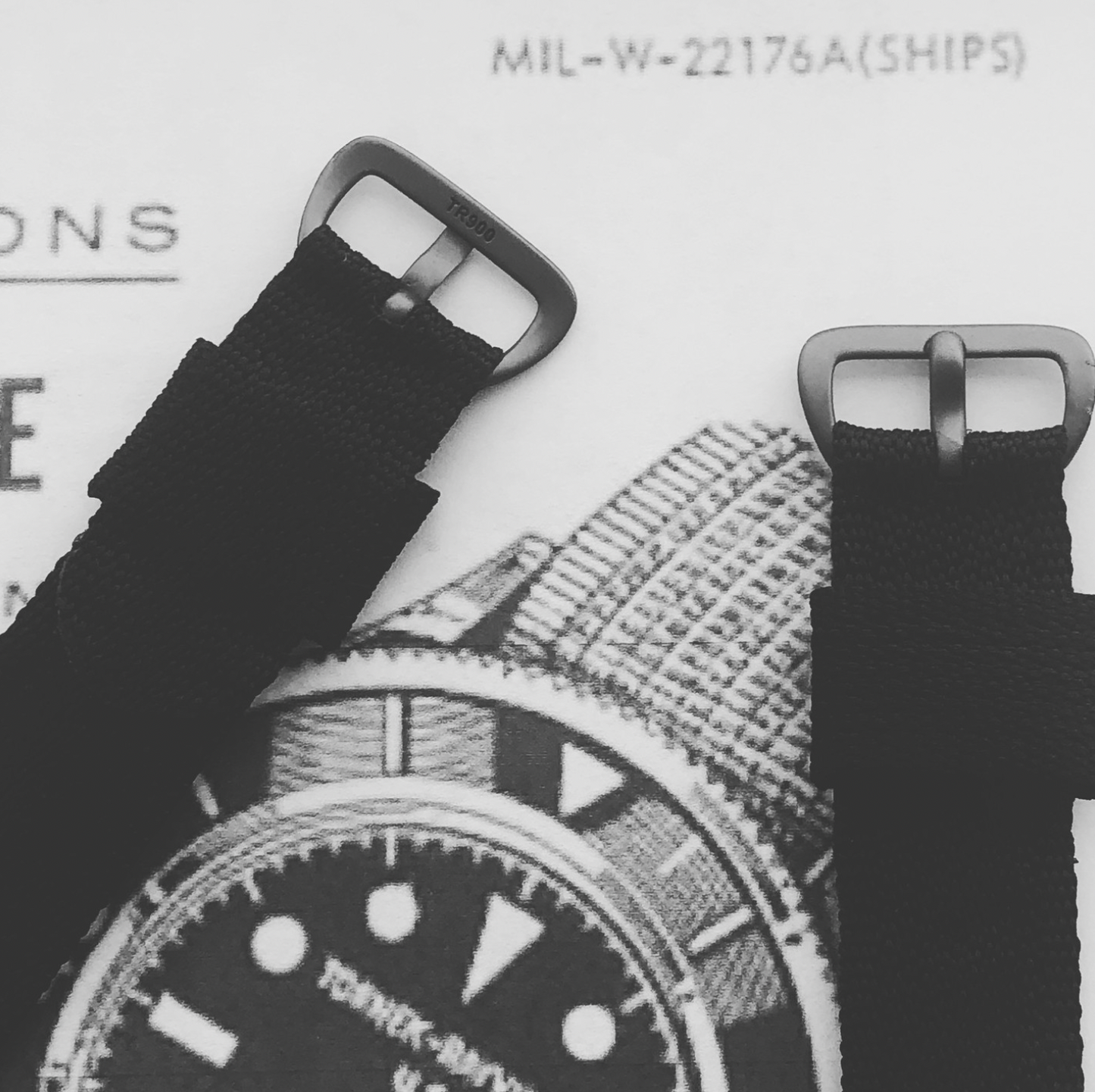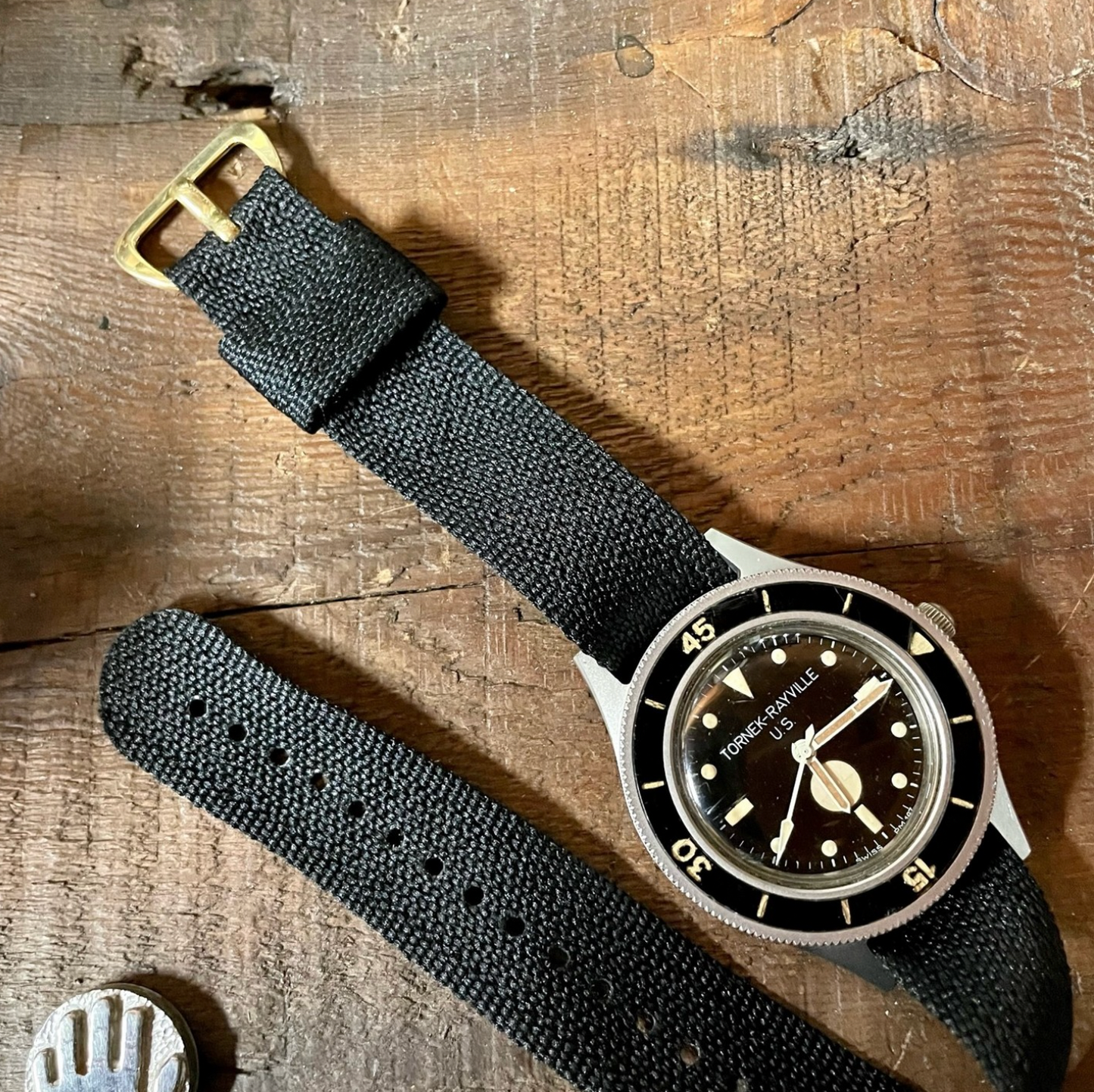On 12 September 1946 Major Desmond Pretyman Apthorp (56653) of The Royal Norfolk Regiment. was made a Member of the Military Division of the Most Excellent Order of the British Empire – a MBE. This reflected his service as a POW commander in Asia during WWll.
After his retirement several of his personal items were donated to the Imperial War Museum.
Below is his wrist watch on an A.F.0210. strap, from the IWM collection. The strap most probably came into his possession as he was rehabilitated from Saigon at the end of WWll, as a replacement for his white web strap.

WRIST WATCH (EPH 3103)
© IWM (EPH 3103)
The IWM notes read :
This watch has a square face with a chrome-steel case. This wrist watch worn by Captain Dudley Apthorp, Royal Norfolk Regiment, who was the Senior British Officer of the ‘British Sumatra Battalion’ nicknamed ‘Appy’s locusts’. The battalion consisted of 20 officers and 480 men from all three services captured in Sumatra a month after the Fall of Singapore. It went on to work on the Burma-Thailand Railway. Senior Allied officers often had the difficult task of working with their medical officers to find enough men fit to join work parties demanded by the Japanese. Quote from Bob Grafton who was in the battalion: ‘Captain Dudley Apthorp was a regular officer – a “proper officer” – in the eyes of the men. Dudley would appear on the twice daily rollcalls (tenkos) properly dressed; regulation cap, with his cap badge…of Britannia filed from an Australian penny (EPH 684), and wrist watch on white web strap. The fact that his shirt and shorts were rotting in the sweltering climate mattered not. To the men who paraded naked except for a ‘G’ string he was a ‘proper officer’. The men loved his unruffled dignity. The Japs hated it. He was a disciplinarian but scrupulously fair. His stands against the Japanese demands for work from his emaciated group (150 died in the first twelve months) earned him many vicious beating which angered the men, but these he took with crushing dignity. In his quiet way he continued his fight against the Japanese in the POW camps, cleverly showing just enough of his deeply felt contempt for them, which fired his spirit and made them feel uncomfortable.’
His Badge is below :

MAJOR DUDLEY APTHORP :
CAP BADGE FILED FROM AUSTRALIAN PENNY.
© IWM(EPH 684)
The book published below on the ‘British Sumatra Battalion’ is based on the secret diary kept by Captain Dudley Apthorp, their commanding officer, at great risk to himself, and carried from camp to camp in a hollowed out bamboo. It also includes the recollections in their own words, of several of the POWs.

THE BOOK ON THE BRITISH SUMATRA BATTALION.
The diary and private papers of Captain Dudley Apthorp are also in the IWM.
The citation reads:
Ms diary (47pp), April 1944 – September 1945, with ts cyclostyled transcript, and a post-war report (36pp) and other papers compiled during his service with the Royal Norfolk Regiment, describing in detail the history of the British Sumatra Battalion, a group of 500 British Army and Royal Air Force personnel selected from the 1200 captured at Medan, Sumatra on 17 March 1942 as overseas working parties, based in the following prisoner of war camps in Burma: Mergui (May – August 1942), Tavoy (August – October 1942), Hlepauk (October 1942 – January 1943), Tahyzin (January – March 1943), Thetkaw (March – April 1943), Kunkwat Kwai (April – May 1943), Hlepauk (May 1943), Retpu (May – July 1943) and Taungsan (July – November 1943); in Thailand: Chaungena 114 Kilometre Camp (November 1943 – January 1944), Kanchanaburi (January – March 1944) and Tamarkan (March 1944); and in Saigon, French Indo China (April 1944 – March 1945). Because of illness, deaths and Japanese reorganisations the Battalion was split several times, but divided finally into officers (Kanchanaburi) and other ranks (Saigon) in March 1944. Held with the collection are an ms nominal roll (64pp), with ts transcript (26pp), of the Battalion, giving each person’s fate, an ms record (4pp) made at the time by Apthorp of Lieutenant Colonel Magatoma’s speech as Commandant of Thanbyuzayat camp in October 1942, and an information leaflet dropped over Saigon by the Allied relief forces in 1945.

